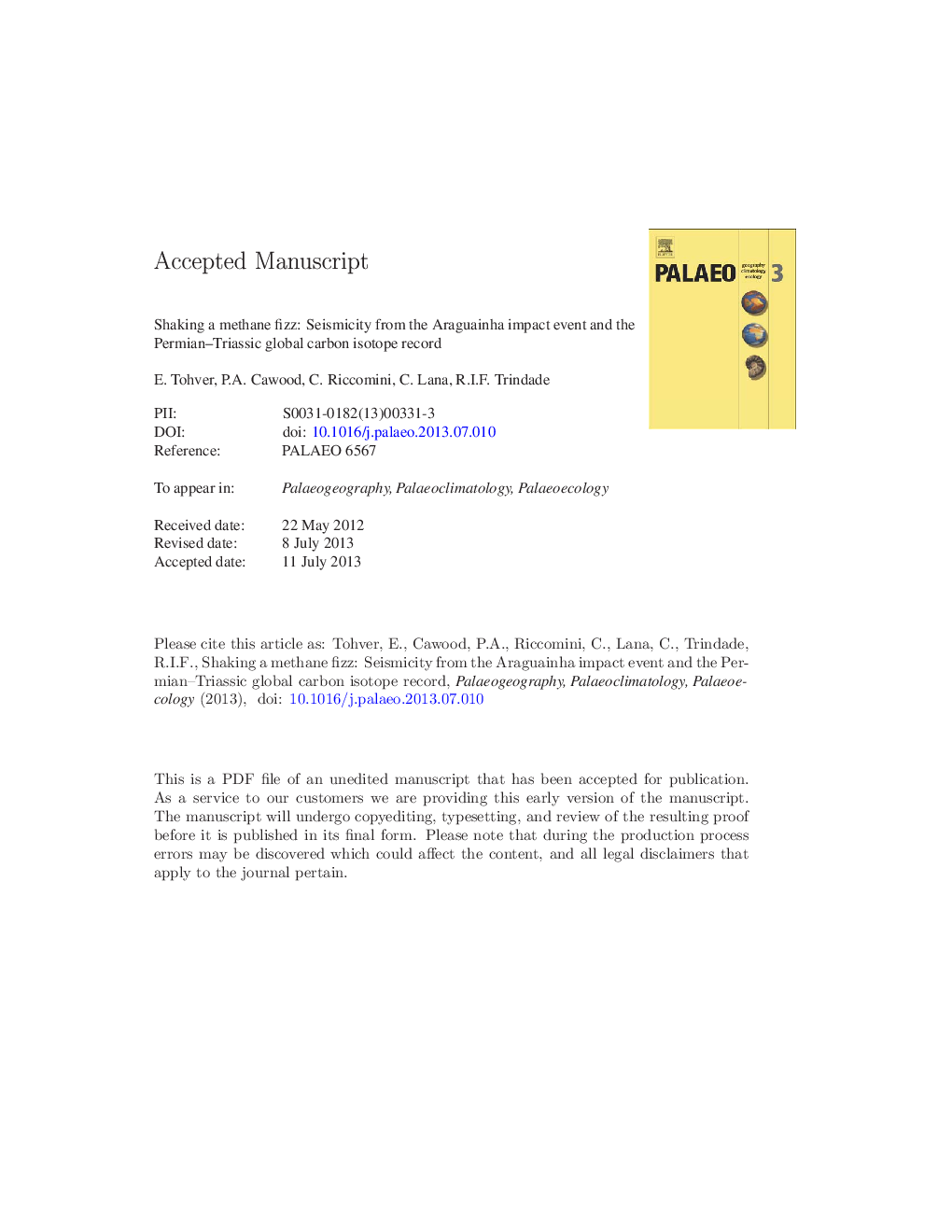| کد مقاله | کد نشریه | سال انتشار | مقاله انگلیسی | نسخه تمام متن |
|---|---|---|---|---|
| 6350184 | 1622202 | 2013 | 44 صفحه PDF | دانلود رایگان |
عنوان انگلیسی مقاله ISI
Shaking a methane fizz: Seismicity from the Araguainha impact event and the Permian-Triassic global carbon isotope record
دانلود مقاله + سفارش ترجمه
دانلود مقاله ISI انگلیسی
رایگان برای ایرانیان
موضوعات مرتبط
مهندسی و علوم پایه
علوم زمین و سیارات
فرآیندهای سطح زمین
پیش نمایش صفحه اول مقاله

چکیده انگلیسی
The Late Permian and Early Triassic periods are marked by large fluctuations in the carbon isotope record, but the source(s) of the disturbance to the global carbon cycle and the link to the end-Permian mass extinction are widely debated. This contribution explores the possible isotopic effects of an impact event into the hydrocarbon-rich rocks of the Paraná-Karoo Basin. Recent U-Pb and 40Ar/39Ar dating of the 40 km Araguainha impact structure of central Brazil reveals an age of 254.7 ± 2.5 Ma (2Ï error) for this event. The calculated energy (105-106 MT of TNT equivalent) released by this impact is less than threshold values of 107-108 MT TNT equivalent for global mass extinctions. Thus, the Araguainha crater is unlikely to have been the cause of the end-Permian biotic crisis. However, the combined seismic effects from the impact itself and the post-impact collapse of the 20-25 km diameter transient crater to its present 40 km diameter would result in large magnitude earthquakes (Mw 9.3-10.5) and tsunamis in the shallow marine Paraná-Karoo Basin. Slope failure and sediment liquefaction are predicted to have occurred within a 700-3000 km radius of the crater, causing large-scale release of methane from organic-rich sediments of this basin, including the oil shale horizons of the Iratà Formation. New geological evidence for seismicity in the Paraná Basin at the time of impact is presented, together with a compilation of existing carbon isotope data from the Paraná Basin, which demonstrate a widespread pattern of disturbance consistent with the release of methane. These two datasets suggest that both seismicity and methane release took place within ca.1000 km of the impact site, with mass balance calculations suggesting ca. 1600 GT of methane were released into the atmosphere at this time. Methane release at this scale would have significant climate effects and would contribute to a sharp (< 1 ka) negative shift in δ13C values at the time of the impact, which should be distinguishable from the more gradual shift over 0.5-1 Ma caused by contemporaneous intrusion of the Siberian traps.
ناشر
Database: Elsevier - ScienceDirect (ساینس دایرکت)
Journal: Palaeogeography, Palaeoclimatology, Palaeoecology - Volume 387, 1 October 2013, Pages 66-75
Journal: Palaeogeography, Palaeoclimatology, Palaeoecology - Volume 387, 1 October 2013, Pages 66-75
نویسندگان
E. Tohver, P.A. Cawood, C. Riccomini, C. Lana, R.I.F. Trindade,